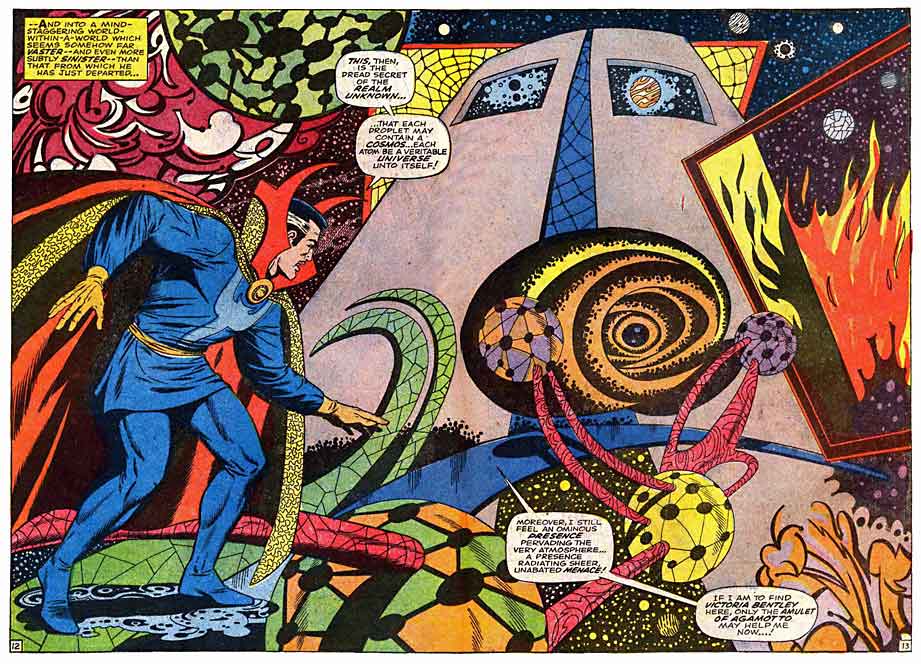With the motion-picture premiere of Doctor Strange hitting movie theaters, the comic-book origins forecast an intricate future for Marvel’s Sorcerer Supreme.
Dr. Stephen Strange debuted in the Marvel comic book universe in July 1963, in issue #110 of Strange Tales. The book was originally a showcase book for various old and new characters of the Marvel Universe. Created by renowned comic book artist Steve Ditko, Strange embodied a combination of Eastern mysticism and black magic. He was named Strange as he was appearing in the Strange Tales comics.
Originally, Stephen Strange was a brilliant and egotistical neurosurgeon whose only desires are wealth and fame. A freak car accident shatters the bones in his hands, causing nerve damage, rendering him unable to practice as a neurosurgeon again. His pride blinds him to a career doing anything but surgery. He runs through his savings in a desperate search to heal his hands, only to wind up penniless. He hears a rumor of a mystical healer in the Himalayas and nearly kills himself wandering the mountains until he finally finds The Ancient One, an old Asian man, a stereotype of the wise Easterner.
The Ancient One brings him into his sanctuary, but refuses to help the self-centered Strange. Strange meets The Ancient One’s latest apprentice, Baron Mordo, an equally egocentric and power-hungry magician. Despite his faults, Strange foils Mordo’s attempt to kill The Ancient One and steal his power. The Ancient One recognizes Strange’s goodness and was aware of Mordo’s sudden-but-inevitable betrayal, banishing Mordo and elevating Strange to apprentice. Thus, a rivalry is born.
One of the successes of the book was Ditko’s illustrations of the surreal and mystical realms beyond the main dimension of the Marvel Universe. The images were almost hallucinogenic, seemingly inspired by Salvador Dali. Translating the comic book to the silver screen may be difficult as the abstract may not play out so well in live action. Vast expanses of a man floating through space peppered with surrealist shapes may be too trippy, but it seems the film may take a lesson from Inception, using reality-bending special effects to portray a dream. This is quite fitting as Strange has had to do battle in the dream realm of the villain Nightmare from time to time.
Ditko’s visualization of Strange’s magic spells were also abstract. Unlike the traditional set of offensive spells in a role playing game, Strange invokes the powers of the Vishanti, initially with a pomp and ceremony of a sideshow illusionist. The crimson bands of Cyttorak and the flames of Faltine are staples in Strange’s magical repertoire and should figure prominently in the film.
Doctor Strange is one of the most powerful figures in the Marvel Universe, but has never garnered the popularity of the X-Men or Spider-Man. His power is a fine surgical strike, guarding not only the planet, but the universe from incomprehensible threats from other realms. For years he stood on the sidelines on the battles between Earth’s heroes and villains, manipulating events from the background. After Marvel’s Civil War comic book event, Strange finally joined the battle, siding with the heroes against superhero registration. Strange has since become a member of the Avengers and figures prominently by their side not only against mystical threats, but all manner of crises.
Strange was also prominent in the Infinity Gauntlet storyline, the same story that seemingly influences the course of the Marvel films. With Strange confirmed to be in the Avengers: Infinity War films, he may play a more important role than mere observer. This once B-list superhero may be the only Marvel Cinematic Universe character powerful enough to control the infinity gems and preserve the film universe.


